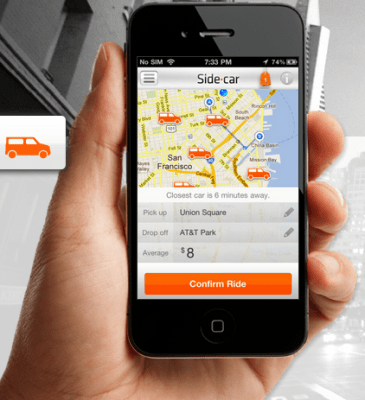It’s been about a year since SideCar and Lyft entered our lives, bringing the idea of a peer-to-peer marketplace for urban transportation to San Francisco. Since then, they’ve expanded to other cities, providing a way for passengers to open up their mobile phones and find rides from other regular people who have time and a car to get them there. Oh, and have we mentioned that Uber has jumped into the ring as well, essentially saying that they’ll offer peer-to-peer rides in any city where their lower-priced competitors play.
We at TechCrunch have been referring to this phenomenon as “ride sharing.” Not a post goes by, however, without someone jumping into the comments to point out that the phrase is inadequate to describe what SideCar, and Lyft, and Uber are actually doing.
To be clear, the services that these companies offer are far removed from the sort of casual carpooling that is legal — and even encouraged — as a way to cut down on car ownership, reduce greenhouse gases, and the like. As commenters and opponents like to point out, so-called “ride share” companies usually operate more like unlicensed taxi or limo services than as a way to connect two people who share a common destination.
But in markets like San Francisco, they’ve become a welcome alternative to the constrained taxi supply and relative high cost of Uber’s traditional black car service. Competition means more options, more drivers available, and ultimately, more choice when trying to get from point A to point B in a limited amount of time.
Still, there’s that little problem of terminology. I like raide sharing because hey, it’s easy. And it’s kind of an accepted way to describe what Lyft and SideCar do. But it’s not exactly totally accurate. Drivers are sharing rides, sure, but one could argue that cabs and limos are as well. And so-called “ride share” drivers, while not commercially licensed, are also participating in background and driver checks and getting paid — kind of like cabbies.
SideCar has been pushing the idea of “ride matching,” mainly due to the “destination” aspect of its app. Unlike Lyft and Uber, it requires passengers to enter not only where they’re originating from, but where they’re going. As a result, it argues that its service is perhaps a more pure example of the ride-share ideal since, hey, everything’s voluntary and drivers don’t have to go out of their way if they don’t want to. For SideCar, it’s a differentiator, but it’s not a reason to re-define the market.
So anyway, dear reader — now is your chance to make me change my headlines and stories forever more, to influence the way that we describe this brave new world of urban transportation. Come up with a new descriptor, three words or fewer (preferably one or two) to explain what the hell it is SideCar and Lyft do, so the commenters will leave us all alone and stop complaining that these companies are just glorified unlicensed taxi services.
